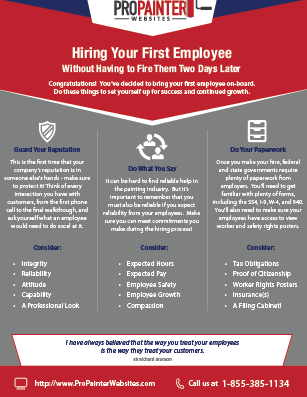Examine The Role Of Seasonal Factors In The Success Of Commercial Outside Painting And Uncover The Very Best Times To Safeguard Enduring Outcomes For Your Job
Examine The Role Of Seasonal Factors In The Success Of Commercial Outside Painting And Uncover The Very Best Times To Safeguard Enduring Outcomes For Your Job
Blog Article
Team Writer-McLamb Rodriquez
When you're preparing a business exterior painting project, seasonal factors can make or break your outcomes. You'll want to think about how temperature and moisture impact paint application and drying out times. Choosing the ideal season can ensure your paint sticks appropriately and lasts longer. Yet which periods are genuinely the best for this kind of work? Allow's explore the crucial elements that can impact your job's success.
The Influence of Temperature Level on Paint Application
When you're intending a business outside painting project, the temperature can substantially influence exactly how well the paint sticks and dries out.
Ideally, you intend to repaint when temperature levels vary between 50 ° F and 85 ° F. If it's too cool, the paint might not heal properly, leading to issues like peeling off or breaking.
On the flip side, if it's also warm, the paint can dry also swiftly, protecting against appropriate bond and causing an irregular surface.
You should additionally consider the moment of day; early morning or late afternoon uses cooler temperatures, which can be a lot more positive.
Always inspect the manufacturer's referrals for the certain paint you're utilizing, as they often give advice on the perfect temperature range for ideal outcomes.
Moisture and Its Result on Drying Times
Temperature isn't the only environmental variable that affects your commercial exterior painting project; humidity plays a substantial duty also. High moisture degrees can slow down drying out times significantly, impacting the total quality of your paint work.
When the air is filled with moisture, the paint takes longer to cure, which can result in issues like poor adhesion and a higher danger of mold development. If you're painting on a specifically humid day, be prepared for extensive wait times in between layers.
It's essential to keep an eye on regional climate condition and plan accordingly. Ideally, aim for moisture levels between 40% and 70% for optimum drying.
Maintaining these factors in mind guarantees your job remains on track and provides an enduring coating.
Best Seasons for Commercial Exterior Paint Projects
What's the most effective season for your industrial external paint tasks?
straight line interiors and very early loss are usually your best choices. Throughout these seasons, temperature levels are moderate, and moisture levels are commonly lower, developing optimal problems for paint application and drying out.
Avoid Suggested Site , which can cause paint to dry also quickly, leading to inadequate attachment and surface. In a similar way, winter months's chilly temperature levels can hinder correct drying out and healing, taking the chance of the long life of your paint job.
Aim for days with temperatures between 50 ° F and 85 ° F for ideal results. Remember to inspect the local weather report for rainfall, as wet conditions can destroy your task.
Preparation around these elements ensures your paint project runs efficiently and lasts much longer.
Conclusion
Finally, planning your business external painting jobs around seasonal considerations can make a significant difference in the outcome. By scheduling work throughout the optimal temperature levels and moisture degrees, you'll guarantee much better adhesion and drying times. Bear in mind to watch on local weather report and select the right time of year-- springtime and early autumn are your best bets. Taking these steps will help you accomplish a long lasting and specialist coating that lasts.
